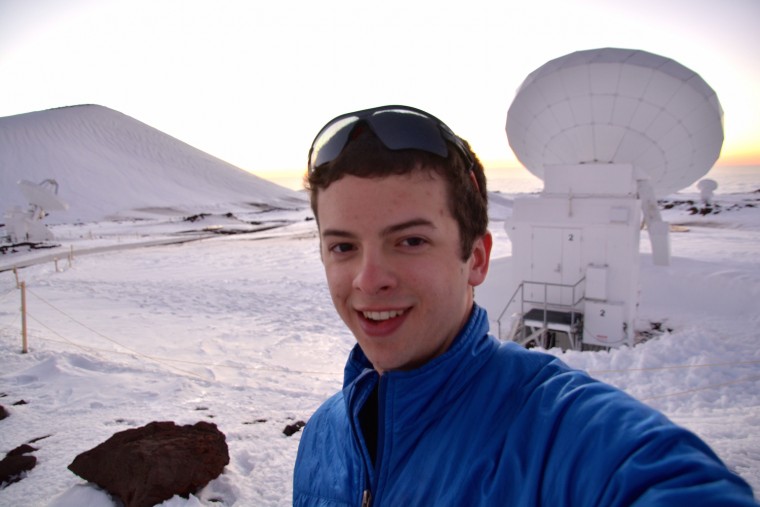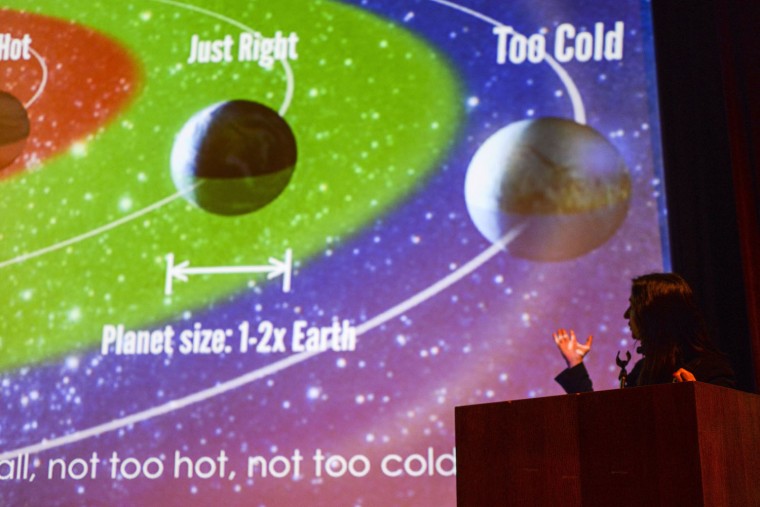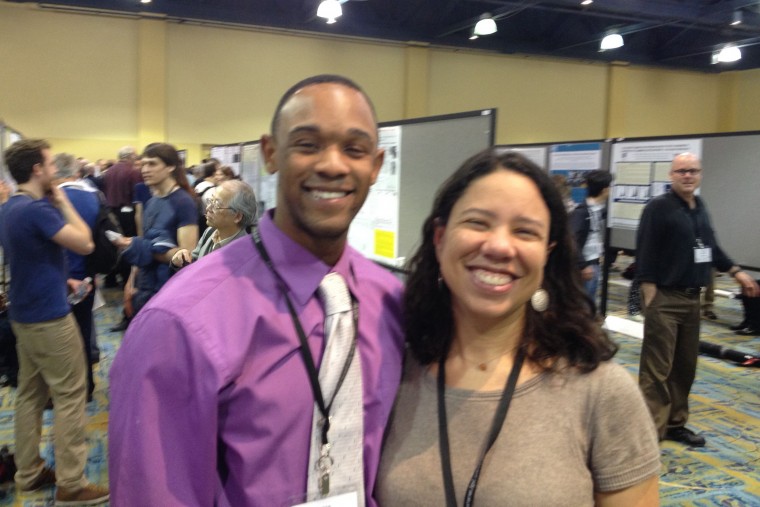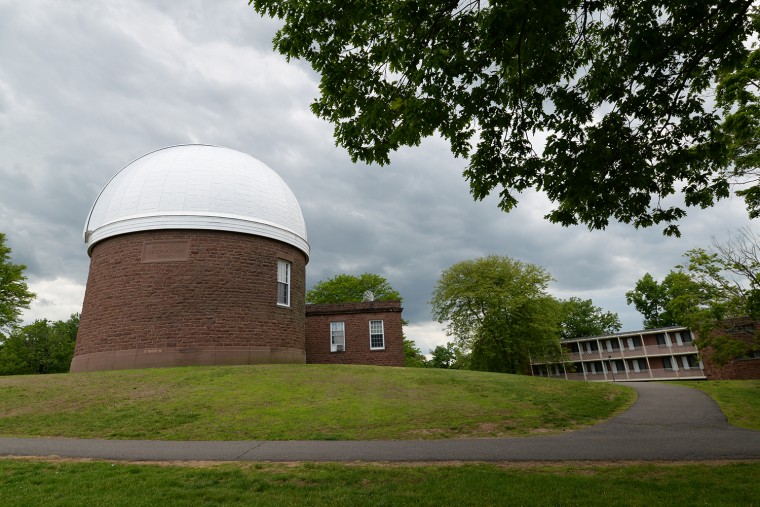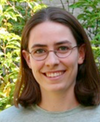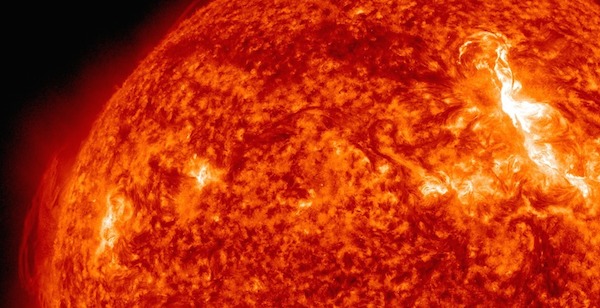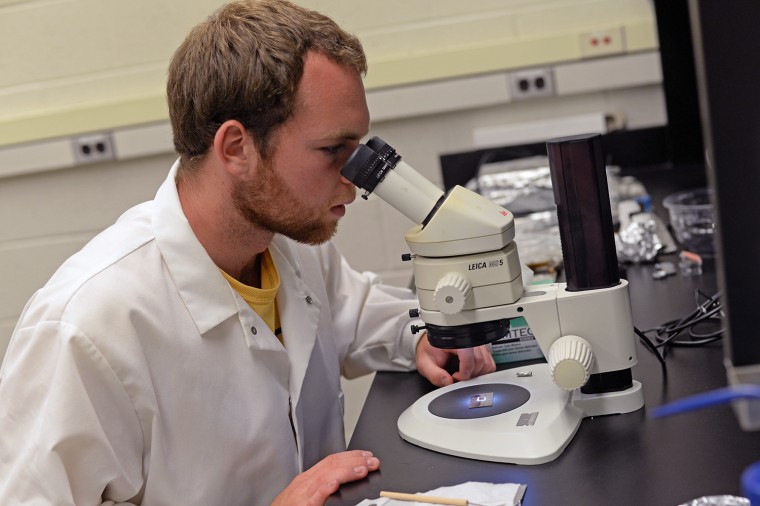Seth Redfield, associate professor of astronomy, and Wilson Cauley, postdoctoral researcher in astronomy, led the effort on a paper titled "Optical hydrogen absorption consistent with a thin bow shock leading the hot Jupiter HD 189733b" accepted for publication in The Astrophysical Journal. Bow shocks are ubiquitous astrophysical phenomena resulting from the supersonic passage of an object through a gas. In this paper, the authors present a robust detection of a time-resolved pre-transit, as well as in-transit, absorption signature around the hot Jupiter exoplanet HD 189733b using high spectral resolution observations of several hydrogen lines. Better knowledge of exoplanet magnetic field strengths is…
#THISISWHY In this News @ Wesleyan story, we speak with Sam Factor '14, a graduate student in astronomy. Q: Sam, congratulations on completing your master’s thesis in astronomy! We understand you took your first astronomy class in the fall of your senior year at Wesleyan. What was your undergraduate major and how did your late-developing interest in astronomy come about? A: Thank you very much! As an undergrad, I majored in physics and computer science. During the fall of my senior year I took Introductory Astronomy (ASTR 155). I signed up for the course mainly because I wanted an interesting and relatively easy…
On April 29, Sara Seager, Class of 1941 Professor of Planetary Science and Physics at the Massachusetts Institute of Technology, spoke on "The Search for Earth 2.0" at the annual Sturm Memorial Lecture. (Photos by Dat Vu '15) (more…)
Several Wesleyan students and faculty were recently awarded grants for research by NASA's Connecticut Space Grant Program. Seth Redfield, associate professor of astronomy and campus director of NASA's CT Space Grant Consortium, was excited about the number of winners. "I was thrilled to see how successful Wesleyan was this year in getting grants through NASA's CT Space Grant program," wrote Redfield. "It demonstrates the diversity and quality of work we do that is aligned with NASA’s mission." "The grants this year support undergraduate, graduate, and faculty research, as well as special events organized by faculty at Wesleyan to promote exposure and…
Students, faculty and alumni involved in planetary science attended the 46th Lunar and Planetary Science Conference March 16-20 in Houston, Texas. Jim Greenwood, assistant professor earth and environmental sciences, gave a talk titled "urCl-KREEP? Cl-rich glasses in KREEP basalts 15382 and 15386 and their implications for lunar geochemistry." Martha Gilmore, chair and professor of earth and environmental sciences and the George I. Seney Professor of Geology, met with the Venus Exploration Analysis Group as a member of its Executive Committee. Jack Singer '15 and Lisa Korn MA '15 presented posters. Several Wesleyan alumni also made presentations at the conference including James Dottin ’13 (E&ES), now a PhD…
Beginning Feb. 4, Wesleyan’s Van Vleck Observatory will open to the public every Wednesday night, rain or shine, for presentations by faculty and students on the latest space-related discoveries, as well as a chance for everyone to view the sky through a telescope, weather permitting. The program will start at 8 p.m. on Wednesdays. Presentations are intended to be accessible to visitors of all ages, although aimed primarily at high school level and above. (more…)
Martha Gilmore, the George I. Seney Professor of Geology, and her former graduate student Patrick Harner MA ’13 are the co-authors of a paper titled "Visible–near infrared spectra of hydrous carbonates, with implications for the detection of carbonates in hyperspectral data of Mars," published in Icarus, Vol. 250, pages 204-214, April 2015. The paper suggests that hydrous carbonate minerals might be relevant on Mars. "We bought and made these unusual minerals in my lab and then took spectra of them to simulate what Mars orbiters might see. Carbonate minerals form in water on Earth (e.g., limestones), and are predicted for Mars, but…
Jim Greenwood, assistant professor of earth and environmental sciences, was awarded a Faculty Seed Research Grant from the Connecticut Space Grant Consortium, supported by NASA. The honor comes with a $6,000 award. Greenwood will use the grant to support his research on “D/H of ‘Dry’ Extraterrestrial Materials.” Understanding the distribution, delivery, and processing of volatiles in the solar system is of fundamental interest to planetary science. Volatiles influence a number of important properties of planetary bodies, such as the cooling, differentiation, volcanism, tectonism, climate, hydrosphere/atmospheres and especially habitability. Greenwood will use the award to develop a new state-of-the-art inlet system for the measurement…
Jesse Lieman-Sifry '15 received a $5,000 Undergraduate Directed Campus Scholarship from the Connecticut Space Grant Consortium, funded by NASA. The award will be applied to his financial aid package and support his ongoing research in the Astronomy Department.
Assistant professor of Astronomy Meredith Hughes and eight colleagues have found evidence of magnetic fields in stardust – an indication that magnetic fields are important in the process of planetary system formation, according to a new paper in the journal Nature. The discovery is another step in work by Hughes and other astronomers to understand how celestial bodies are formed. It is known that magnetic fields in the “accretion disks” of stars play a dominant role in the star formation process. Using data from an observatory near Bishop, Calf., Hughes and her colleagues were able to spot signs of magnetic…
A July NASA report that a huge solar storm narrowly missed Earth in 2012 – avoiding catastrophic damage to energy, transportation and communications systems – has caused a media stir and some worry among Earthlings. What’s more, other recent reports say that Earth is overdue for a devastating storm of the kind known as a “Carrington event” after an 1859 storm that disrupted telegraph signals and caused other damage in a still-nascent industrial world. Named for 19th-century English astronomer Richard Carrington, it was the largest of its kind on record. A similar event now, in a world dependent on digital…
As a recent recipient of an undergraduate research fellowship, Jack Singer '15 is spending his summer at Wesleyan studying the geochemical evolution of the moon. The fellowship, supported by the Connecticut Space Grant College Consortium, comes with a $5,000 award. Grantees are expected to work on research related to space/aerospace science or engineering under the guidance of a faculty member or a mentor from industry. For the next three months, Singer will work on various research projects with his advisor James Greenwood, assistant professor of earth and environmental science. Singer will first prepare a fragmented lunar sample (Apollo 12035,76) for…


